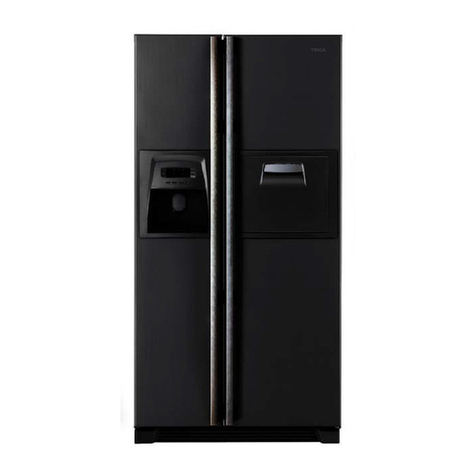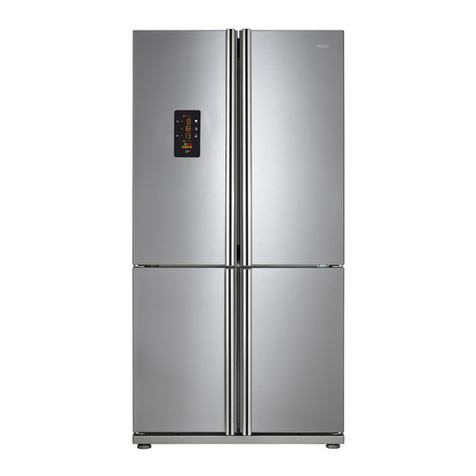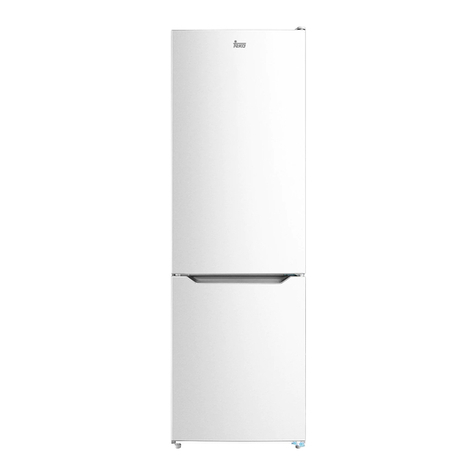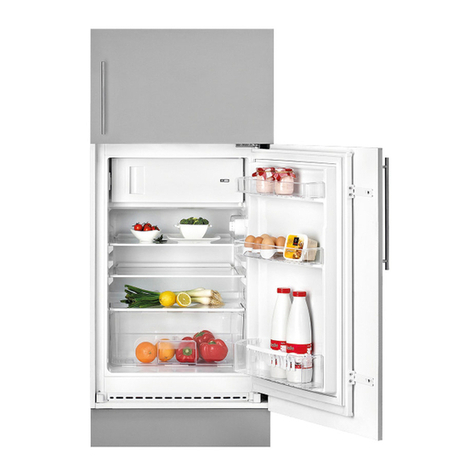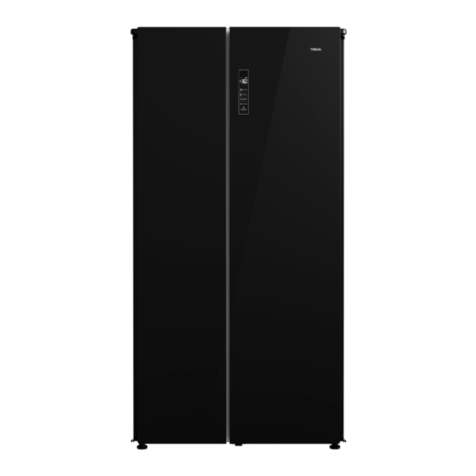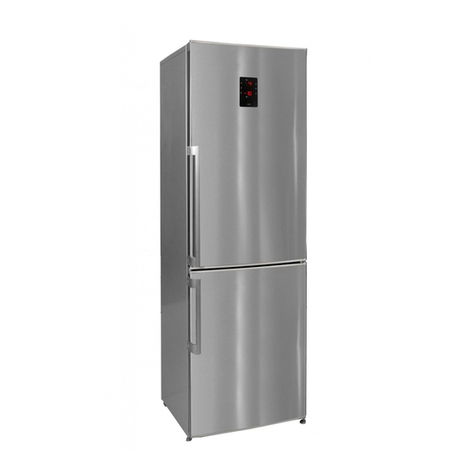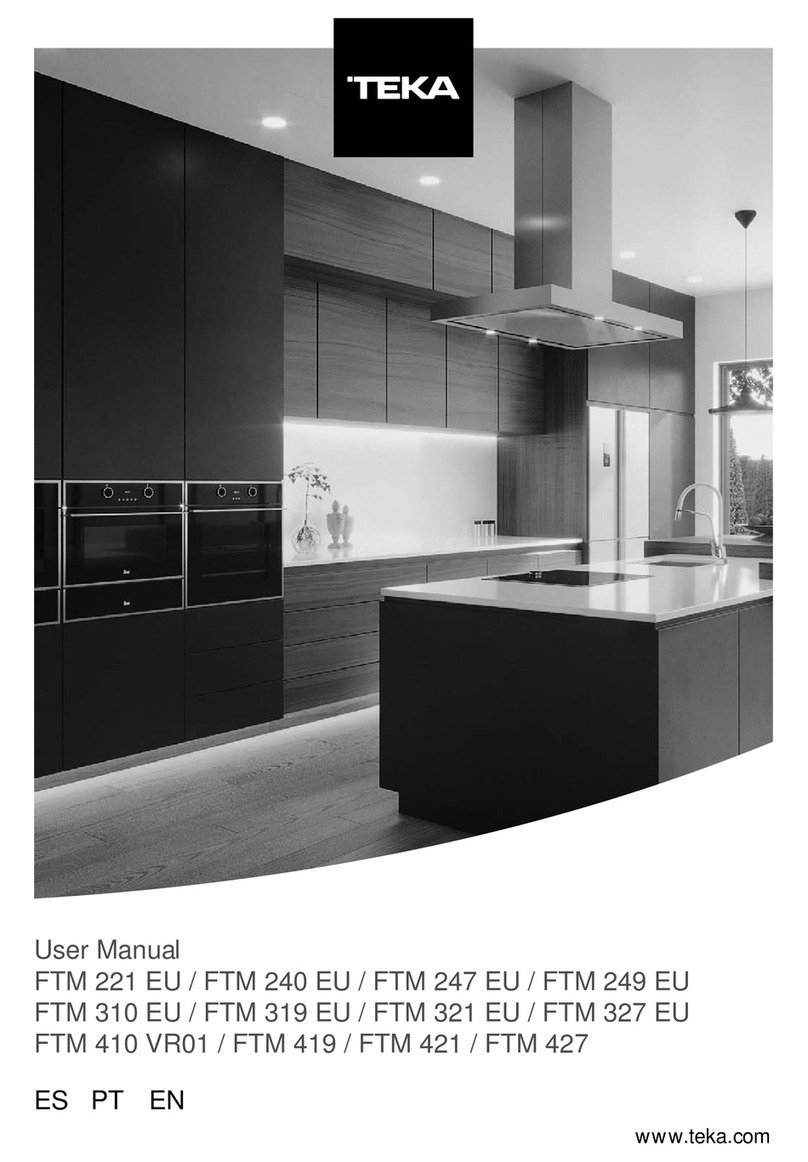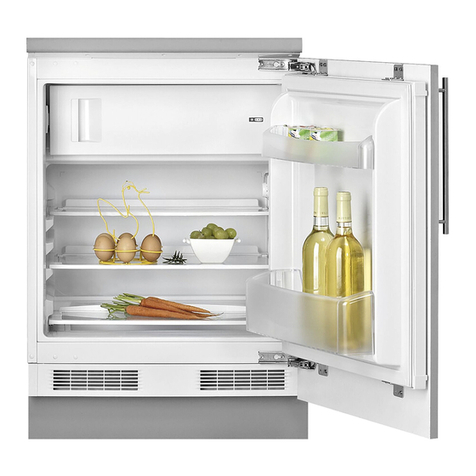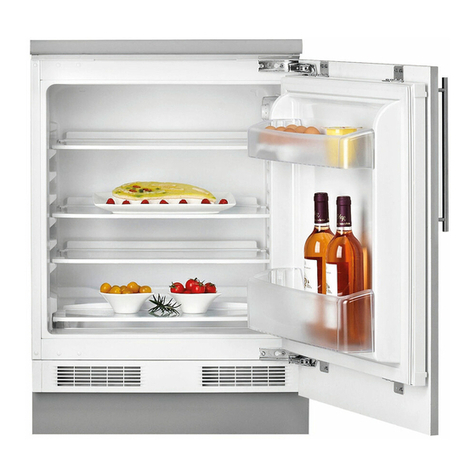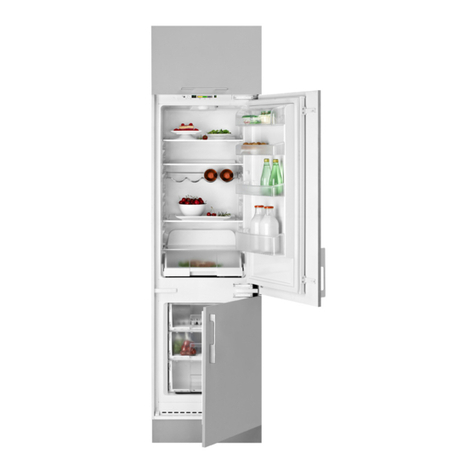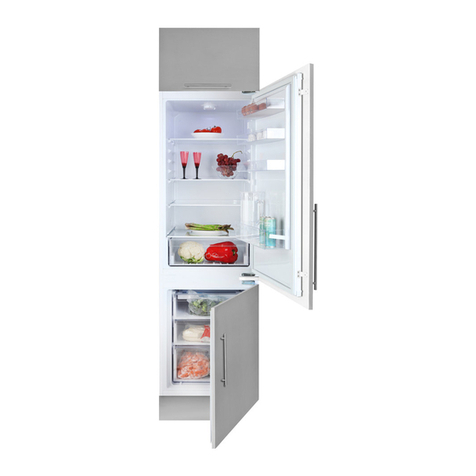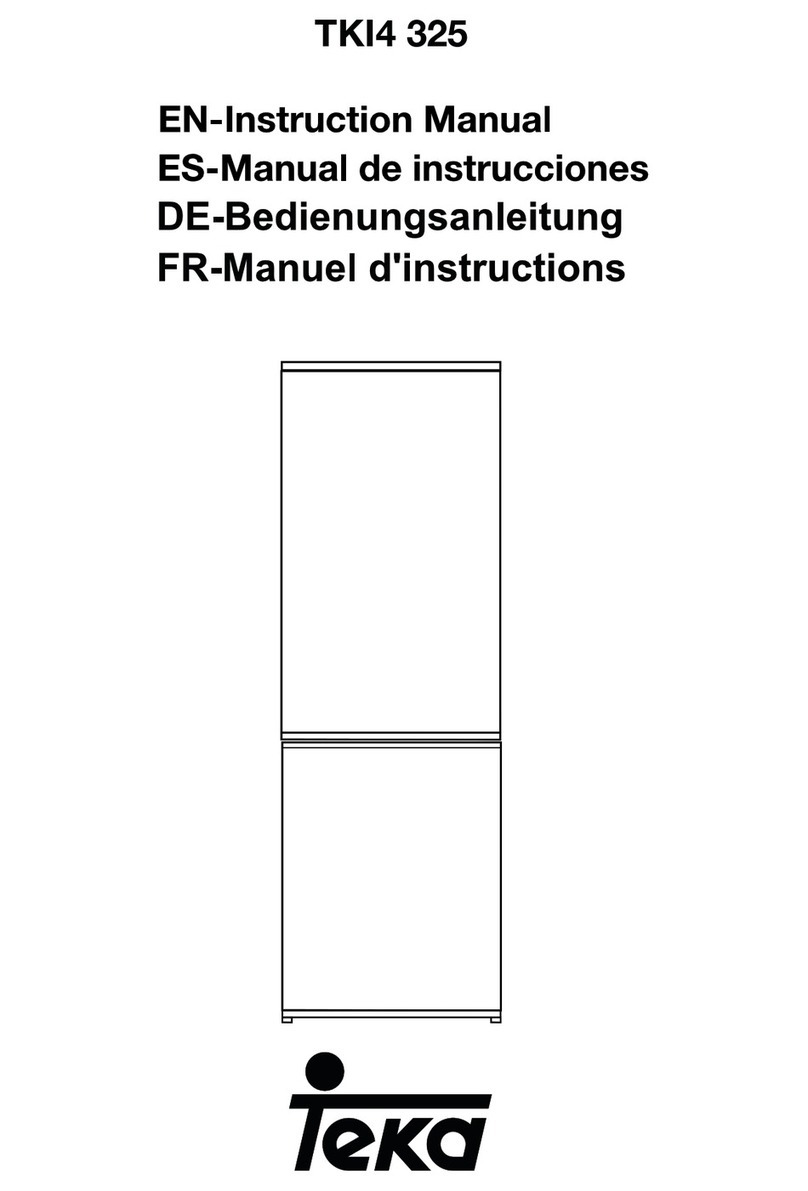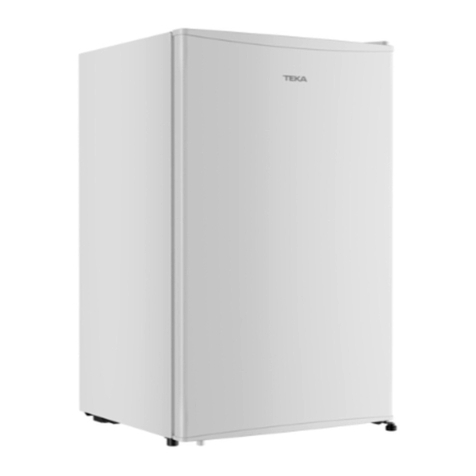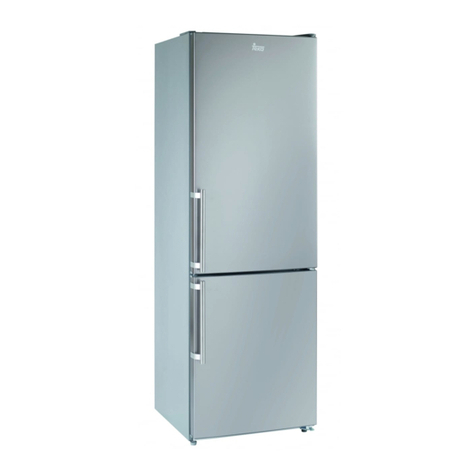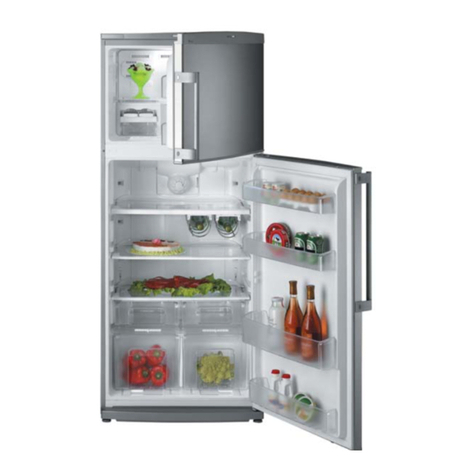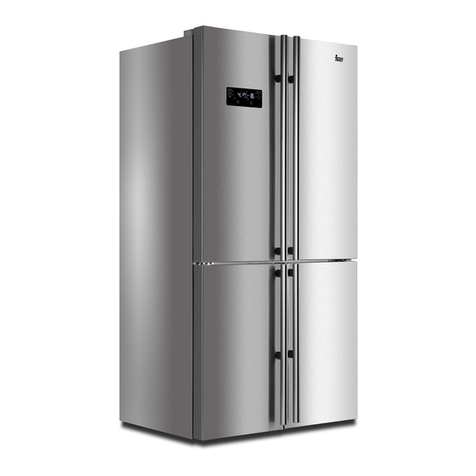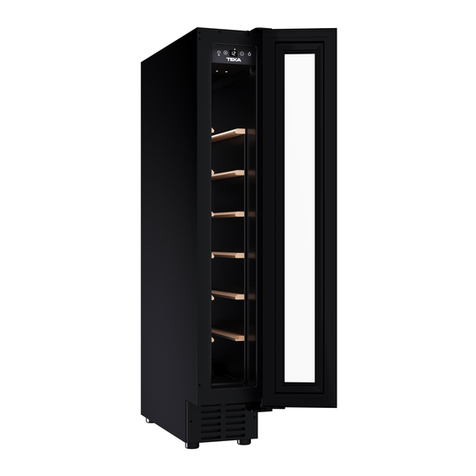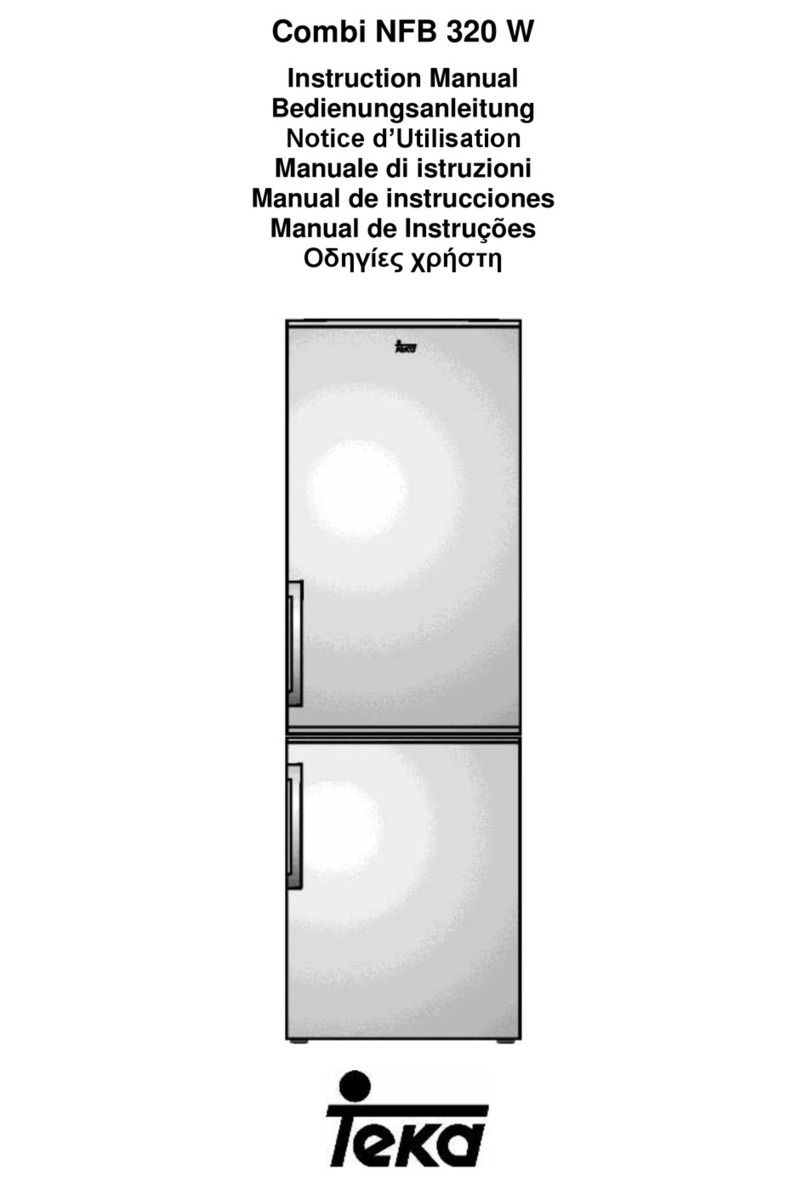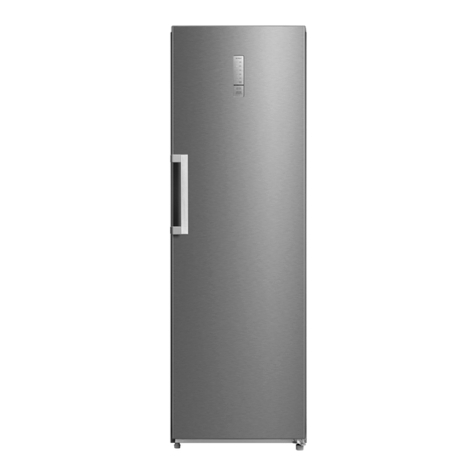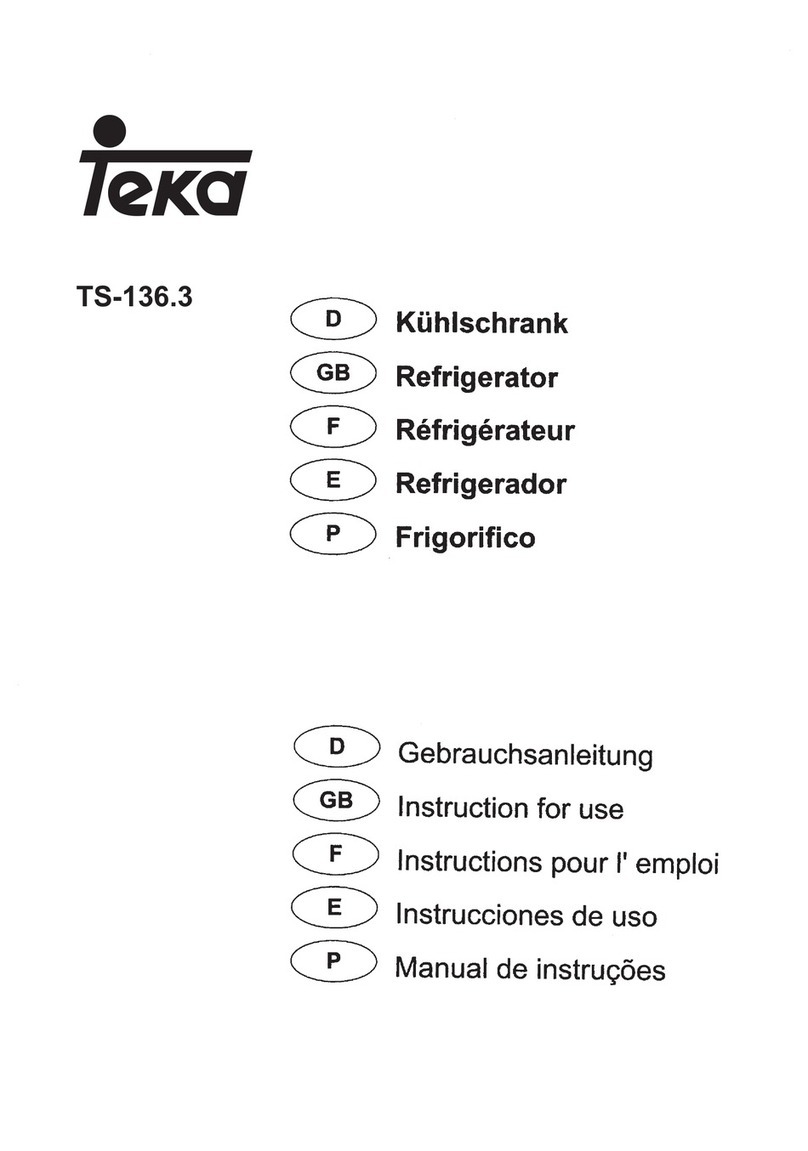
EN -6-
• compartment as they can burst as the contents freeze.
• Do not place explosive or ammable material in your fridge. Place drinks
with high alcohol content vertically in the fridge compartment and make
sure that their tops are tightly closed.
• When removing ice from the ice-making compartment, do not touch it.
Ice may cause frost burns and/or cuts.
• Do not touch frozen goods with wet hands. Do not eat ice-cream or ice cubes immediately
after you have taken them out of the ice-making compartment.
• Do not re-freeze frozen goods after they have melted. This may cause health issues
such as food poisoning.
• Do not cover the body or top of fridge with lace. This affects the performance
of your fridge.
• Secure any accessories in the fridge during transportation to prevent damage
to the accessories.
Installing and operating your fridge
Before starting to use your fridge, you should pay attention to the following points:
• The operating voltage for your fridge is 220-240 V at 50Hz.
• We do not accept responsibility for any damages that occur due to ungrounded usage.
• Place your fridge where it will not be exposed to direct sunlight.
• Your appliance should be at least 50 cm away from stoves, gas ovens and heater cores,
and at least 5 cm away from electrical ovens.
• Your fridge should never be used outdoors or exposed to rain.
• When your fridge is placed next to a deep freezer, there should be at least 2 cm between
them to prevent humidity forming on the outer surface.
• Do not place anything on your fridge, and install your fridge in a suitable
place so that at least 15 cm of free space is available above it.
• Use the adjustable front legs to make sure your appliance is level and stable.
You can adjust the legs by turning them in either direction. This should be
done before placing food in the fridge.
• Before using your fridge, wipe all parts with a solution of warm water and
a teaspoon of sodium bicarbonate, then rinse with clean water and dry.
Place all parts in the fridge after cleaning.
If your refrigerator has a fan condenser:
The condenser of your fridge is placed at the
bottom of cabinet. As a result of that, assemble
the spacer by xing it to holes on the cover
bottom panel and turn 90° that’s shown below
gure for arranging the distance between the
refrigerator and the back wall at where you
place the fridge. You can move the fridge
towards the back wall until that point.
Plastic for distance setting
